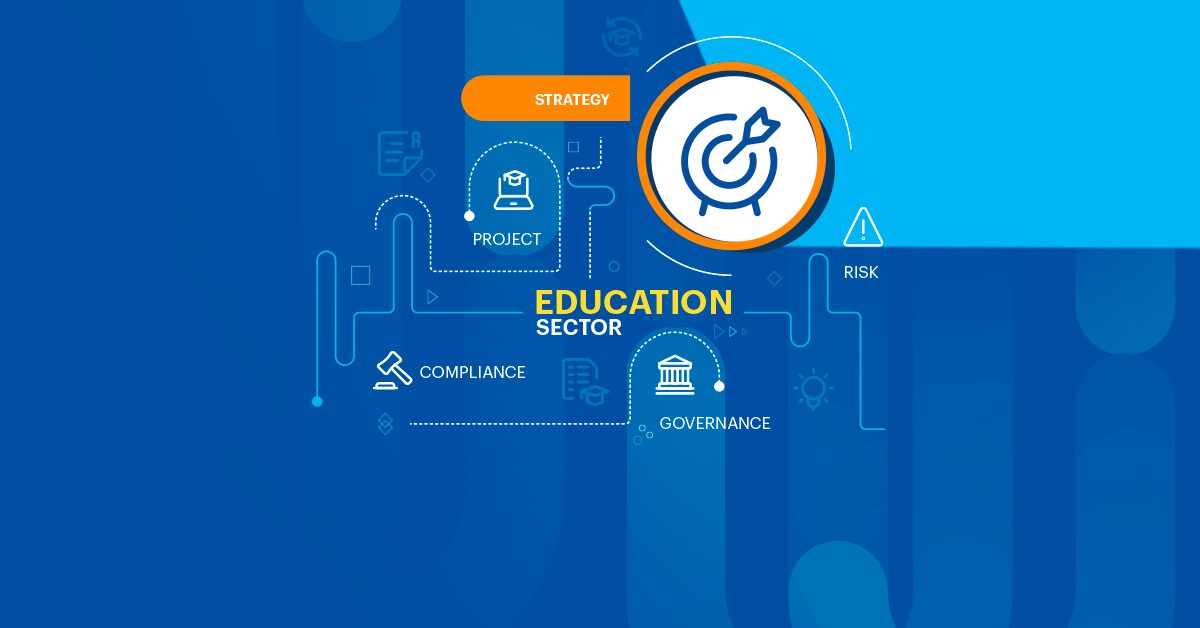Successful businesses don’t cross their fingers and hope they will achieve their goals; they anchor the programmes that underpin them into strategic planning processes so they can act proactively – and the education sector should be no different.
Yes, the end goals differ in the profit-centric world of business where success is gauged on winning new customers, gaining market share, or exceeding quarterly targets – but the principle is the same for schools, colleges, and universities: to lay strategic foundations from which they can build organisational value by informing decision-making and ensuring resources are allocated effectively.
Unlike businesses, which always have one eye on their bottom line, the top-line goals of educational institutions focus on enriching students and supporting staff, including:
- Improving exam grades
- Upgrades to premises or equipment
- Attracting high-quality students
- Attracting high-quality staff and retaining them
- Improving attendance
- Reducing complaints
- Benefiting the community & supporting underprivileged students
- Improving conditions and processes for teachers
- Addressing bad/disruptive behaviour
- Becoming the best school, college, or university in the area
- Achieving high ratings for audits and inspections
Breaking down your strategic plan into tasks and projects
Educational institutions must initiate a series of projects and tasks that are supported by policies and procedures to ensure they have the structure in place to achieve their top-line goals. These initiatives must be underpinned by real metrics and accurate data to help leaders track progress and keep them on course.
Each actionable educational project and task must be reinforced by timelines, budgets, and key performance metrics. For this to be successful, they require clear ownership, key deliverables that track progress, and milestones that define completion deadlines.
Manual processes – such as spreadsheets, emails, shared documents, and folders – are an increasingly inefficient and unstructured means of planning and executing these tasks and projects. These hurdles have accelerated the adoption of strategy planning software within the education sector.
The traditionally complex and time-consuming process of capturing data from across the organisation and shaping it into information that informs the strategy has been streamlined by automation – including linkages to risk libraries, compliance obligations & governance, and rules & policies.
Proactive institutions harness the power of purpose-built software solutions to map their strategy, capture relevant data, and track the progress of goals to completion. Project and task owners can tick off these initiatives, input spend, add timelines, and log risks, KPI’s and dependencies by linking to the organisation’s risk register or obligations library. This provides a best practice framework to achieve goals by completing associated projects and tasks successfully and builds a structured picture of the strategic plan.
Empowered by this structured process, schools, colleges, and universities can achieve holistic communication of their strategy and business goals from the top-down and bottom-up:
- Top-down communication: Management can effectively communicate easy-to-understand tasks with clear metrics to staff, ensuring they comprehend their role in achieving the broader objectives.
- Bottom-up communication: Managers can monitor how key projects and tasks are performing, and when they are completed, without endless meetings and updates. They can identify potential problems early and receive instant notifications of missed deadlines or high budget spend.
This proactive communication model ensures stakeholders are invested and the wider organisation works together towards common goals.
Sustainable improvement
Schools, colleges, and universities are under constant pressure to improve by modernising facilities, increasing grades, and passing inspections. Consequently, sustainable improvement is a core aim of educational management as institutions strive to offer the best possible service to pupils and meet regulatory requirements without compromising their future.
Strategy planning software supports the continuous improvement journey by consistently maximising resources. The flexibility of these tools allows leaders to add new initiatives when necessary or make changes to existing projects and tasks, which can be cascaded across the organisation quickly and clearly enabling everyone to understand their role in the change process.
Linking strategy to your daily operating model
Education institutions have a far better chance of succeeding when their operating model – how the organisation creates value – is aligned with their strategy. Software solutions help organisations to consider daily operations and their impact on strategic goals by enabling them to add dependencies, such as extra manpower or project teams to achieve goals. These budget, resource, and logistics dependencies can be logged quickly and easily, helping them to make informed strategic decisions about where best to allocate resources and spend their budget.
Automation also facilitates best-practice strategy management by linking critical operational data – such as energy usage and finance – to the strategy, providing valuable insight into its performance.
Linking strategy to risk and compliance obligations
An institution’s strategy must remain compliant with the relevant rules and regulations and consider its risk exposure, otherwise, it will become a risk itself – potentially leading to financial penalties and reputational damage.
Strategy planning software has the power to link traditionally siloed activities and dependencies, such as risk registers and compliance obligations libraries, to the overarching strategy. This allows vital risk and compliance information to filter into these operational registers and libraries and inform resource allocation decisions. Software also delivers instant reports that illuminate risk or compliance issues that threaten the efficacy of an institution’s strategy – another proactive tool that allows obstacles to be overcome before they escalate.
A complete overview of strategy progress for leaders in the education sector
By planning their strategy using structured processes that are inherent in specialist software, leaders at education institutions can harness instant dashboards and reports to understand progress, make amendments and roll out changes quickly – offering reassurance to both parents and students. And crucially, they can provide a clear picture to investors that illustrates how the school, college or university is performing and progressing. But, most crucially, the structured strategy planning process mapped out by software will ensure the organisation is on track to meet its strategic objectives, and any potential bumps in the road will be detected early.
For more information about how the Camms strategy software can bring your strategy to life and break it down into actionable tasks, Request a demo. Discover more about how the Camms platform is supporting organisations in the education sector.





